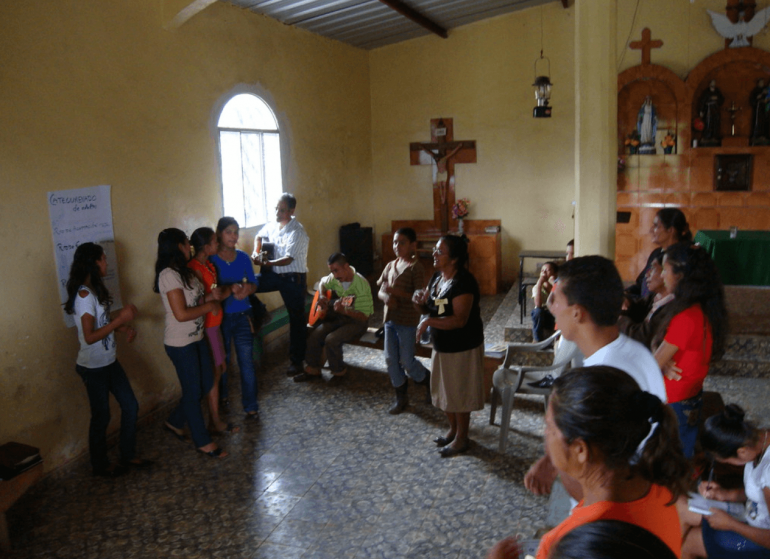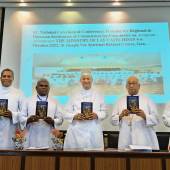5 things to know about the new ministry of catechist

Earlier this year, Pope Francis created the instituted ministry of catechist in the Catholic Church with the publication of the papal letter, Antiquum ministerium (“Ancient ministry”).
The Vatican issued more guidelines this month, along with a rite of institution for the ministry. Here are five things to know.
1. What is the instituted ministry of catechist?
An instituted ministry is a type of formal, vocational service within the Catholic Church. It can be either lay, such as a lector or an acolyte, or ordained, such as a deacon or a priest.
The newly instituted ministry of catechist is for lay people who have a particular call to serve the Catholic Church as a teacher of the faith.
The ministry is “stable,” meaning it lasts for the entirety of life, independent of whether the person is actively carrying out that activity during every part of his or her life.
The catechist collaborates with the local bishop and priests in the teaching of the faith to the local community.
2. But I know catechists, so how is this new?
There are many catechists today who serve the Church at the parish level, whether it’s as a CCD teacher or teacher for RCIA — now called OCIA in the U.S. But the ministry of catechist is tied to the diocese, and the catechist is at the disposal of the diocesan bishop.
The catechist is dedicated to the transmission of the faith through proclamation and instruction — he or she does not have any kind of liturgical responsibility. But catechists can especially be a benefit in places where there are few priests.
The two main categories of tasks for catechists are catechizing, or teaching the faith, and participating in apostolates.
3. Who can be this kind of catechist?
This ministry is reserved, with some minor exceptions, for Catholic lay people who are also not part of a religious congregation or institute.
The bishop is responsible for choosing men and women to be instituted in this Catholic ministry in his diocese, but the Vatican has suggested that the most suitable candidates are those who have “deep faith and human maturity,” are active participants in the life of the Christian community, and “capable of welcoming others, being generous and living a life of fraternal communion.”
Candidates should be properly prepared through “suitable biblical, theological, pastoral and pedagogical formation.” Prior experience of catechesis is also a prerequisite.
Baptized adult Catholics who have received the sacraments of first Holy Communion and confirmation and would like to be instituted in the ministry of catechist can present a written and signed petition to their diocesan bishop.
The Vatican has emphasized the “vocational aspect” of the ministry, urging bishops to discern carefully about who to admit.
In Antiquum ministerium, Pope Francis described the qualities that the Church seeks in participants in the new lay ministry. He wrote: “Catechists are called first to be expert in the pastoral service of transmitting the faith as it develops through its different stages from the initial proclamation of the kerygma [Gospel proclamation] to the instruction that presents our new life in Christ and prepares for the sacraments of Christian initiation, and then to the ongoing formation that can allow each person to give an accounting of the hope within them.”
“At the same time, every catechist must be a witness to the faith, a teacher and mystagogue, a companion and pedagogue, who teaches for the Church,” he said.
4. What is the rite of institution in the ministry of catechist?
The rite of institution is a liturgical ritual by which the role of catechist is conferred. The ministry is conferred by the bishop, or a priest delegated by him, at either a Mass or a celebration of the Liturgy of the Word, following the liturgical rite issued by the Holy See on Dec. 13.
If the institution takes place during Mass, following the proclamation of the Gospel, a priest or deacon will call by name each of the candidates, who will present themselves to the bishop, responding: “Here I am.” The rite also suggests that the bishop should give a short homily on the role of the catechist. There is an invitation to prayer, a blessing, and a crucifix is handed to each new catechist.
5. Besides teaching the faith, the Vatican says some instituted catechists can celebrate “minor exorcisms.” What’s that?
In the Catholic Church, there are two types of exorcism: “major” ones and those called “simple” or “minor.”
When someone refers to exorcism, they are most likely speaking about the act of casting demons or evil spirits out of people, places, or objects possessed or plagued by them. This is major exorcism, a practice reserved to a Catholic priest delegated by his bishop to carry out this task within his own diocese.
The U.S. bishops’ conference explains on its website that a minor or simple exorcism is part of the Rite of Baptism for Children and part of the Order of Christian Initiation for Adults (OCIA).
The guidelines for the ministry of catechist note that a diocesan bishop may delegate “‘truly worthy and suitably prepared’ catechists to celebrate the minor exorcisms” for catechumens preparing to be received into the Catholic Church.
Radio Veritas Asia (RVA), a media platform of the Catholic Church, aims to share Christ. RVA started in 1969 as a continental Catholic radio station to serve Asian countries in their respective local language, thus earning the tag “the Voice of Asian Christianity.” Responding to the emerging context, RVA embraced media platforms to connect with the global Asian audience via its 21 language websites and various social media platforms.














